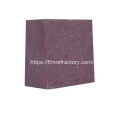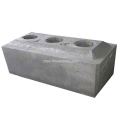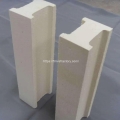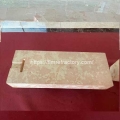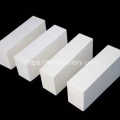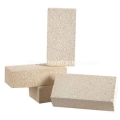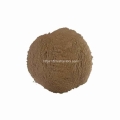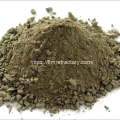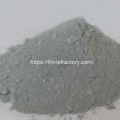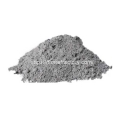- Performance. Innovation. Worldwide. Your trustworthy Refractories Manufacturing Partner--Fireramo
- +86 175 3769 7777
Contact
Contact us on WhatsApp
High Quality Refractory Bricks
Insulation Bricks for Sale
Monolithic Refractory
Methods of selecting kilns for firing ceramics
Ceramics is the art of fire, the firing (sintering) of ceramic is carried out in high-temperature kilns. Common kilns in the modern ceramic industry include intermittent kilns and continuous kilns. The firing of ceramics cannot be achieved without various kiln furniture.How to choose appropriate ceramic firing furniture and materials based on different kilns is an important step in achieving ceramic firing. The main furniture for firing ceramics include carts, models, and various kiln furniture used for firing porcelain billets.

Kiln furniture refers to the general term for tools used in the production of ceramics. Ceramics with diverse colors and shapes cannot be separated from the use of kiln furniture.
When porcelain blanks are placed in the furnace for firing, they need to be separated by auxiliary tools made of refractory materials.
The purpose of using kiln furniture is to enable it to serve as a container, spacing, support, and protection for the billet during the ceramic firing process. To prevent product contamination and defects during the firing process, reduce the occurrence of waste and improve the utilization rate of kiln space, in order to increase the loading density and facilitate kiln operation.
The types of kiln furniture include saggars, batts, supports, various refractory pads, pallets, rollers, and kiln cart materials.
The characteristics that kiln furniture should possess
Firstly, it should have good thermal shock resistance and high temperature mechanical properties.
Kiln furniture should have good thermal conductivity and breathability, good thermal conductivity can beneficial for improving the lifespan of kiln equipment, reducing fuel consumption, and improving product quality.
Kiln furniture should have a high load softening temperature and fire resistance, requiring its load softening temperature to be 50~100 ℃ higher than the firing temperature of the fired product.
Kiln furniture should have small weight, low heat storage, accurate size, and good regularity.
Volume stability of kiln furniture during repeated use (irreversible change): no slag falling.
- Cordierite Mullite Bases & Covers
- High Alumina Ceramic Rollers
- Cordierite Mullite Y Supports
- Cordierite Mullite Total Foot Supports
- Cordierite Mullite T Supports
- Cordierite Mullite Pressed Pillar/Props
How to choose kiln furniture – Selection of saggars and batts
If the kiln is a coal fired or wood fired kiln, the ash residue of the fuel during firing often contaminates the product, this may lead to the ceramic color is not so well. To ensure quality, saggars should be used.
If clean energy kilns such as gas kilns and electric kilns are used for firing (such as pottery), there is a trend towards saggars less firing. The placement of embryos in the kiln is mainly based on carbon silicon batts. Generally, for pre installed vases, teapots, cups and bowls, it is advisable to use batts.
If the roller kiln ,the roller is a key refractory material in the roller kiln, which uses a combination of bottom plate, pillar, and shed plate kiln equipment to transport ceramic bodies. Usually use high-quality silicon carbide combination kiln furniture. The combination of high-quality silicon carbide bottom plate and high-quality silicon carbide batts. Low temperature belts can use heat-resistant steel rollers. When calcining light parts, aluminum silicon rollers should be used for high temperature belts. When calcining heavy parts or when the temperature is above 1350 ℃, silicon carbide rollers should be used. If the firing temperature is lower, a combination of ordinary silicon carbide bottom plate and Cordierite shed plate can also be used as kiln furniture.
How to use kiln furniture
Determine the kiln density or product type for each part based on the temperature difference inside the kiln.
High fire level dense installation, low fire level sparse installation; Color glazed products are packaged according to the fire resistance of the pigments.
Maintain a certain distance between kiln furniture and products between kiln furniture and kiln body to ensure reasonable flow of flue gas and uniform heat transfer. There is a sand cushion (cake cushion, mud cushion, coating) between the kiln furniture, kiln bottom, and kiln car surface to prevent adhesion.
The stacking is firm and stable, ensuring safe operation under high temperature or vibration.On the premise of ensuring safety and product quality, reduce the weight of kiln equipment, reduce the amount of kiln equipment used, and improve economic benefits.
In the roller kiln, after the rollers are installed on the roller conveyor kiln, the determination of the roller spacing should ensure the uniformity of the kiln temperature in the upper and lower spaces of the roller conveyor plane — there should be enough wide gaps to facilitate the circulation of hot air; It is also necessary to ensure the safety of the roller kiln operation — even if one roller is broken or pulled out, there should be at least two rollers supporting the product. Therefore, the actual roll spacing should be maintained with at least three rollers supporting the product, and determined based on the size of the product to be fired.
Specializing in refractory materials for over 20 years, we provide professional refractory solutions for the global high temperature industry.
Related Posts:
- Causes and solutions to cracking of castables after baking
- Enhancing the Medium Temperature Strength of Refractory Castables
- Ways to ensure the accuracy of refractory brick acceptance results
- Acceptance inspection after cement kiln construction
- Three Common Ways of Damage to the Sliding Nozzle for Ladles
Theme By Fireramo
